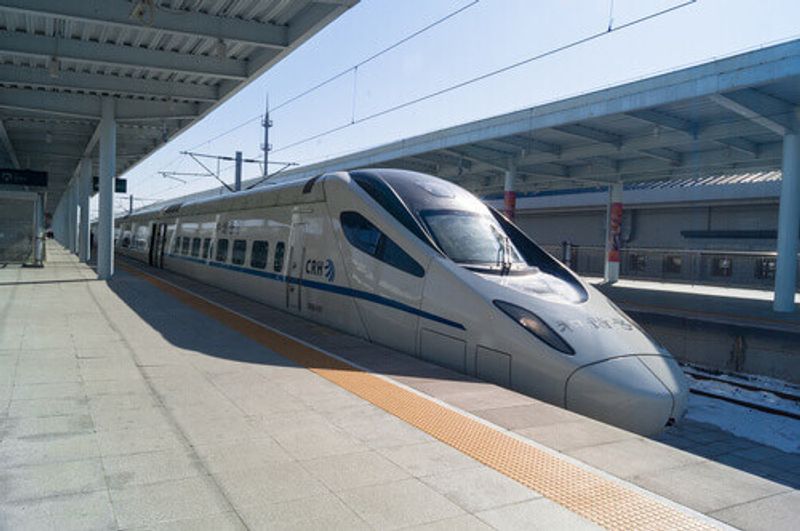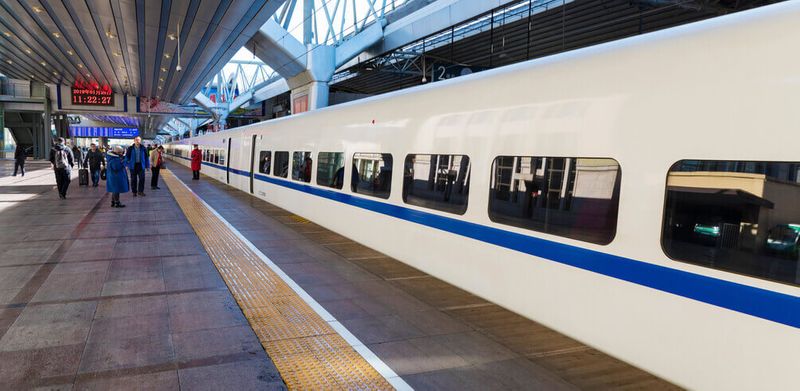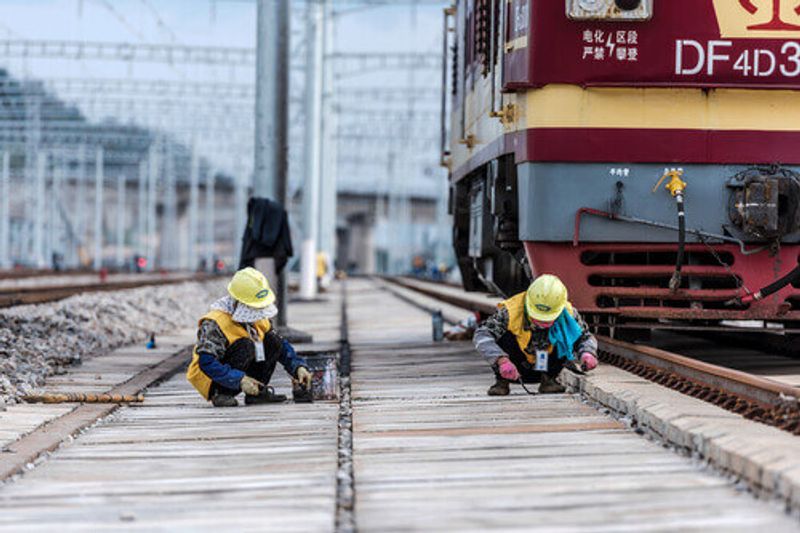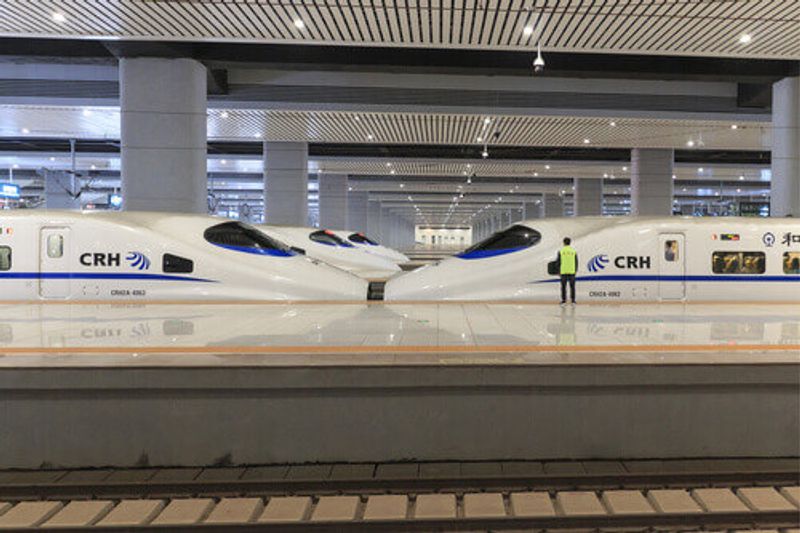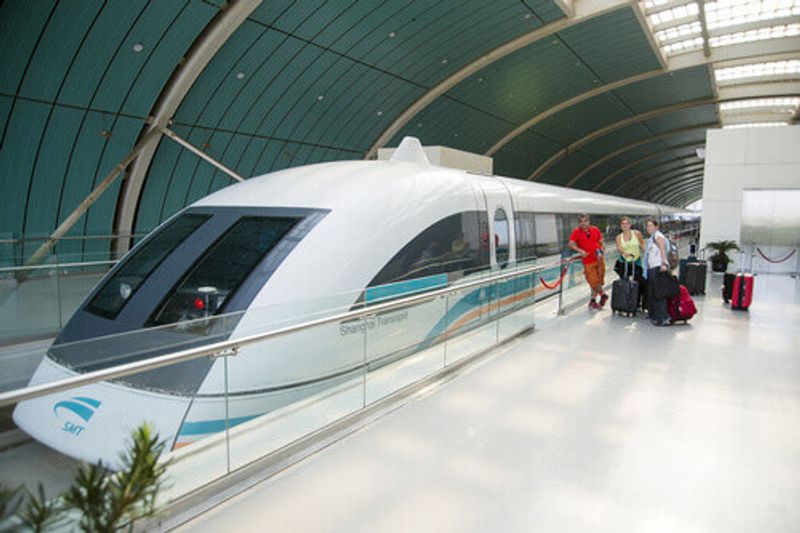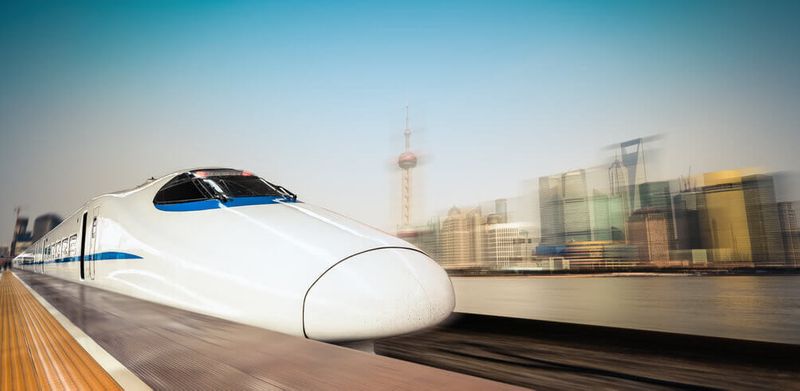The nation that gave the world gunpowder and the compass has since reinvented the bullet train and currently boasts the fastest vehicle on two tracks. The Chinese High-Speed Rail (HSR), which began operations in the mid-2000s, has managed to zoom ahead of Japan’s Shinkansen. Today, the HSR system has become more popular than ever, attracting not only local commuters but also international tourists eager to explore. With its efficiency, affordability, and ability to connect cities in record time, train travel has become a top choice for many.
Read on to discover all about the China bullet train, officially the world’s fastest train network, how to buy train tickets in China, and what you can expect on board.
The Evolution of China’s Rail Network
With one of the world’s largest populations spread across a landmass bigger than Australia, China has always faced a challenge: how to move people quickly and affordably across vast distances. Yet, despite clear demand, the country’s modern rail system was slow to get on track.
At the height of the rail-building era, the Qing Dynasty rejected British attempts to introduce trains, suspecting they had hidden intentions. By 1911, when the Qing Dynasty's reign ended, China had just 9,000 km of railways, most of which were privately owned. The Japanese occupation of China saw more lines driven down from Russia across the north-east and by the time Mao Zedong took power in 1949, most of the country’s 27,000 km network was in Manchuria.
Mao clearly remembered the ancient Chinese proverb: “The mountain is high and the emperor is far away” (tian gao, Huangdi yuan). He saw rail’s potential for strengthening his hold over every corner of this vast and mountainous country and embarked on an ambitious investment programme, doubling China’s operating mileage by 1970.
Subsequent leaders’ zeal to modernise the country has driven the growth of China’s rail network to 131,000 km, making it the second-largest in the world, behind only the primarily freight-based US network. It has also become the world’s busiest, with 1.35 trillion passenger-kilometres travelled in 2017, and over two billion passengers in 2018.
China's Need for Efficient Transport
As China’s economy soared in the late 20th and early 21st centuries, the urgency for efficient, rapid, and cost-effective travel became undeniable. Enter the idea of magnetic levitation (Maglev) technology—viewed as a revolutionary way to keep pace with the nation’s growth. Zhao Ziyang, who served as Premier in the 1980s, was among the leaders championing advanced transport infrastructure. Beyond simply showcasing cutting-edge engineering, Maglev promised a greener, high-speed alternative to traditional rail and air travel.
Based on German technology, the Shanghai Maglev glides along an elevated track, using magnetic levitation (‘maglev’), rather than conventional rails and steel wheels. These powerful magnets provide a super-smooth ride and allow the trains to reach speeds of 460 km/h (286 mph).
High-Speed Rail: China’s Vision
In official Chinese planning documents, the high-speed rail (HSR) network is called the “Eight Vertical and Eight Horizontal Plan.” The name is matter-of-fact—based on eight north-south and eight east-west lines—but it hardly does justice to the network’s colossal scale and speed.
Consider its flagship route: from Beijing to Shenzhen (China’s bustling manufacturing hub), and then on to Hong Kong. This 2,300-kilometre track is the world’s longest operational HSR line, whisking passengers between these key cities in just 10 hours—about the same distance and duration as travelling from Melbourne to Cairns.
But speed is only part of the story. By offering an alternative to cars and planes, China’s HSR network slashes carbon emissions, supporting the country’s push to combat climate change. With more people choosing rail for its environmental benefits, the world’s busiest network is quickly becoming a cornerstone of China’s ambition to lead the way in sustainable transport.
The Birth of the Shanghai Maglev
The jewel in China’s HSR crown is the Shanghai Maglev. The train takes just seven minutes to complete the 30 km route from the city centre to Pudong Airport, and reaches a top speed of 430 km/hr, making it the fastest commercial train in the world.
Looking at the future, the Shanghai Maglev represents just the beginning of China’s ambition for super-fast transport systems. Plans for longer Maglev routes are in the works, and other cities in China are exploring Maglev technology as part of their transportation networks.
China's success with Maglev has sparked international interest. Several countries, including Germany and Japan, are now developing their own Maglev systems, inspired by the Shanghai model.
How to Buy Train Tickets in China
As you'd expect, navigating China’s high-speed rail system requires some patience and time unless you speak and read some Mandarin. While announcements are in Mandarin and English, learning some key words and remembering the characters for ‘train’ (huǒchē), ‘train platform’ (huǒchē zhàntái), ‘train ticket’(huǒchē piào), will be helpful in your travels (and give you a confidence boost!). If this is overwhelming, downloading a language translation app on your phone will help immensely, too.
1. Buy Tickets Online
The easiest way for non-Mandarin speakers to purchase high-speed rail China tickets is by using online booking platforms that offer English-language support. Search for routes, choose classes and seats, and pay with international credit cards. Make sure to register on the site before booking.
Some popular websites and apps include 12306.cn (official Chinese railway site with English language translation) and Ctrip (a well-known Chinese platform offering English support). The seating is usually very comfortable and you can choose from First, Second, and Business Class. First Class offers wider seats with more legroom than Second Class, but it is still very comfortable and has ample space. Business Class is available on some, not all routes, with reclining chairs, more privacy, and extra amenities. There are also quiet carriages where passengers are encouraged to keep noise to a minimum, making it a perfect place to relax, read, or work in peace.
2. Purchase from Train Station Ticket Windows
If you prefer speaking to a human, many HSR train stations in China now have English-speaking staff, especially in major cities like Beijing, Shanghai, and Guangzhou. Ensure you bring your passport, the train number or route you want to book, and your desired departure time and date.
3. Use Self-Service Ticket Machines
Major train stations are equipped with self-service ticket machines that include an English language option. Have your desired train and date handy and pay using either a credit card or cash.
What to Expect on a China High-Speed Train Journey
Travelling by high-speed train in China offers a fast, efficient, and comfortable way to explore the country’s vast landscape. Whether you’re setting off on a short getaway or a longer journey, China’s high-speed rail system is known for its punctuality, convenience, and top-notch amenities. Here’s what you can expect both at the train station and on the train.
At the Train Station
Once you’re inside the station, find the departure board (both in English and Mandarin) and check your train against the platform number. Announcements are made in both Chinese and English. Platform numbers can sometimes change with very little warning, so arrive with plenty of time to spare. We recommend arriving at least one hour before your departure time to allow plenty of time for security and luggage checks. This is especially important if you’re travelling during major Chinese holidays like the Mid-Autumn Festival or Chinese New Year. Every train station is crowded and noisy—it will feel more like an airport than a train station, but it’s all part of the China travel experience!
Boarding the Train
When boarding the train, you may be asked to show your passport and/or your ticket in order to access the platform. Your large luggage can be placed at either end of the carriage, and smaller items can be easily placed on the racks above the seats. From seat selection to helping with luggage, train staff are generally friendly, professional, and willing to assist with any needs during the journey.
Settling in
You should find the seating on board comfortable and pleasant. Train amenities include air conditioning, Wi-Fi (on many but not all trains), and power outlets at each seat. Some trains also have USB charging ports.
When it comes to food on board, a snack trolley is often available, with a selection of light snacks and meals, and drinks. On longer routes, there will be a dining car serving hot meals ranging from Chinese dishes to international options. Hot and cold beverages will also be available.
Some trains offer entertainment options, such as onboard TV screens or apps that allow you to access movies, news, or train-related information. If the outside view interests you more than TV, you’re in luck! Chinese trains have large windows with stellar visibility to enjoy the passing landscapes!
Quick Recap: Tips for Travelling on China's Bullet Trains
Ticket Purchase
- Use online platforms like 12306.cn or Ctrip for easy booking with English support.
- Main train stations have ticket booths with English-speaking staff. Bring your passport and train details.
- Self-service machines are available at large stations, offering English options for ticket purchase.
Navigating the Station
- Arrive at least 1 hour before departure to account for security checks and platform changes.
- Look for departure boards (in both Mandarin and English) for platform info.
- Stations can be crowded, so prepare for busy, airport-like conditions.
- Be ready to show your passport and/or ticket when accessing the platform.
On Board
- Store large luggage at carriage ends; small items can be placed on overhead racks.
- Enjoy comfortable seating with air conditioning, Wi-Fi, power outlets, and USB ports depending on your ticket class.
- Snack trolleys are available for light meals; dining cars may serve hot meals on longer journeys.
- Entertainment options include onboard TV screens or apps, but the scenic views through large windows cannot be missed.
Inspired to visit China? Our tours range from our 8 Day 5 Star Shanghai to Xian Small Group Tour to our 15 Day 5 Star Shanghai to Chengdu with Yangtze River Small Group Tour. Both of these tours include high-speed rail journeys—a truly bucket list experience!
